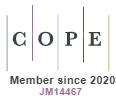Future Projections of Sediments in the Tapajós River and its possible Relationship with Mining Areas
DOI:
https://doi.org/10.5585/2024.25085Keywords:
hydrology, climatic changes, WBMsed, AmazonAbstract
Objective: The objective of the article is to analyze the possible relationship between illegal mining activities and sediment flow in the Tapajós river basin, in Pará.
Methodology: It is quantitative research, which uses simulation and modeling to project the data in different future scenarios, and descriptive analysis to evaluate two results.
Originality/Relevance: It is observed that the Amazon is vital in maintaining the global ecosystem and mitigating the impact of climate change. In this sense, rivers are of great importance in assessing environmental, social and economic impacts. Therefore, this research is relevant due to the fact that there is a lack in the literature about the impact of prospecting activities on Amazonian rivers, with emphasis on the impact of climate change on future projections, mainly in the Tapajós River Basin, which has been suffering a noticeable impact from transport of sediments.
Results: The results will allow us to identify the potential anthropic impact where we have the sediment measurements, which have much more short-term impacts than global climate changes, more robust and long-term.
Social contributions/ to Management: From this research, it is possible to affirm that the changes in the sediments of the Tapajós river can act as a catalyst for the environmental impacts that have already occurred in the region. Logo, the results become a tool for decision-making in environmental, social, and economic questions.
Downloads
References
Alvares, C. A., Stape, J. L., Sentelhas, P. C., Gonçalves, J. D. M., & Sparovek, G. (2013). Köppen’s climate classification map for Brazil. Meteorologische zeitschrift, 22(6), 711-728. https:/doi.org/10.1127/0941-2948/2013/0507.
Arrifano, G. P., Martín-Doimeadios, R. C. R., Jiménez-Moreno, M., Ramírez-Mateos, V., da Silva, N. F., Souza-Monteiro, J. R., &
Crespo-Lopez, M. E. (2018). Large-scale projects in the amazon and human exposure to mercury: The case-study of the Tucuruí Dam. Ecotoxicology and environmental safety, 147, 299-305. https://doi.org/10.1016/j.ecoenv.2017.08.048.
Barreto, E. D. O., & Tavares, M. G. D. C. (2017). O turismo de base comunitária em uma comunidade ribeirinha da amazônia: O caso de anã na reserva extrativista tapajós-arapiuns, santarém(Pa). Revista Brasileira de Ecoturismo (RBEcotur), 10(3). https://doi.org/10.34024/rbecotur.2017.v10.6621.
Branco, J. E. H., Bartholomeu, D. B., Junior, P. N. A., & Caixeta Filho, J. V. (2021). Mutual analyses of agriculture land use and transportation networks: The future location of soybean and corn production in Brazil. Agricultural Systems, 194, 103264. http://dx.doi.org/10.1016/j.agsy.2021.103264.
Brazil. Ministry of the Environment. National Water Agency (ANA). (2005). Harnessing hydraulic potential for power generation. Water Resources Booklets. Brasilia. Retrieved in 2022 November 30, from: http://www.dominiopublico.gov.br/download/texto/an000005.
Brêda, J. P. L. F., de Paiva, R. C. D., Collischon, W., Bravo, J. M., Siqueira, V. A., & Steinke, E. B. (2020). Climate change impacts on South American water balance from a continental-scale hydrological model driven by CMIP5 projections. Climatic Change, 159(4), 503–522. https://doi.org/10.1007/s10584-020-02667-9.
Cardoso, O., & Smith, F. P. (2018). Trabalho emigração no sudoeste do Pará: O caso de Altamira, Amazônia, Pará. Revista Gestão em Conhecimento, 2(2), 9–9. https://doi.org/10.56798/RGC-02-2018-01.
Cohen, S., Kettner, A. J., Syvitski, J. P., & Fekete, B. M. (2013). WBMsed, a distributed global-scale riverine sediment flux model: Model description and validation. Computers & Geosciences, 53, 80-93. https://doi.org/10.1016/j.cageo.2011.08.011.
Costa, C. E. A. S., Blanco, C. J. C., & de Oliveira-Júnior, J. F. (2020). IDF curves for future climate scenarios in a locality of the Tapajós Basin, Amazon, Brazil. Journal of Water and Climate Change, 11(3), 760-770. https://doi.org/10.2166/wcc.2019.202
Costa, M. A., & Rios, F. J. (2022). The gold mining industry in Brazil: A historical overview. Ore Geology Reviews, 148, 105005. https://doi.org/10.1016/j.oregeorev.2022.105005.
Cunha, A. M. B. M. D., & Earp, M. V. D. S. (2022). O setor mineral brasileiro e o impacto socioambiental causado pela exploração ilegal dos recursos minerais. CETEM/MCTI. Série Estudos e Documentos. Rio de Janeiro. Retrieved in 2022 November 30, from: http://mineralis.cetem.gov.br/bitstream/cetem/2624/1/SED-110.pdf.
Dunn, F. E., Darby, S. E., Nicholls, R. J., Cohen, S., Zarfl, C., & Fekete, B. M. (2019). Projections of declining fluvial sediment delivery to major deltas worldwide in response to climate change and anthropogenic stress. Environmental Research Letters, 14(8), 084034. https://doi.org/10.1088/1748-9326/ab304e.
Fagundes, H., O., De Paiva, R. C. D., Brêda, J. P. L. F., Fassoni-Andrade, A. C., Borrelli, P., & Fan, F. M. (2023). An assessment of South American sediment fluxes under climate changes. Science of The Total Environment, 879, 163056. https://doi.org/10.1016/j.scitotenv.2023.163056.
Fassoni-Andrade, A. C., & de Paiva, R. C. D. (2019). Mapping spatial-temporal sediment dynamics of river-floodplains in the Amazon. Remote sensing of environment, 221, 94-107. https://doi.org/10.1016/j.rse.2018.10.038.
Fearnside, P. M. (2015). Amazon dams and waterways: Brazil’s Tapajós Basin plans. Ambio, 44, 426-439. https://doi.org/10.1007/s13280-015-0642-z
Filizola, N., & Guyot, J. L. (2011). Fluxo de sedimentos em suspensão nos rios da Amazônia. Brazilian Journal of Geology, 41, 566-576. https://doi.org/10.25249/0375-7536.2011414566576.
Gonçalves, L. D. P., Lisboa, G. S., & Bezerra, J. F. R. (2017). Alterações ambientais decorrentes da extração do ouro no garimpo de caxias- município de luís domingues-ma. Revista Equador, 6(2), 165–179. https://doi.org/10.26694/equador.v6i2.6508.
Heilpern, S. A., DeFries, R., Fiorella, K., Flecker, A., Sethi, S. A., Uriarte, M., & Naeem, S. (2021). Declining diversity of wild-caught species puts dietary nutrient supplies at risk. Science Advances, 7(22), eabf9967. https://doi.org/10.1126/sciadv.abf9967.
IBGE. Brazilian Institute of Geography and Statistics. (2010). Demographic census. General sample results. Retrieved in 2022 December 11, from:
http://www.ibge.gov.br/home/presidencia/noticias/imprensa/ppts/00000008473104122012315727483985.pdf.
Lees, A. C., Peres, C. A., Fearnside, P. M., Schneider, M., & Zuanon, J. A. S. (2016). Hydropower and the future of Amazonian biodiversity. Biodiversity and Conservation, 25(3), 451–466. https://doi.org/10.1007/s10531-016-1072-3.
Lino, A. S., Kasper, D., Guida, Y. S., Thomaz, J. R., & Malm, O. (2019). Total and methyl mercury distribution in water, sediment, plankton and fish along the Tapajós River basin in the Brazilian Amazon. Chemosphere, 235, 690-700. http://dx.doi.org/10.1016/j.chemosphere.2019.06.212.
Lobo, F. L., Costa, M. P., & Novo, E. M. (2015). Time-series analysis of Landsat-MSS/TM/OLI images over Amazonian waters impacted by gold mining activities. Remote Sensing of Environment, 157, 170-184. https://doi.org/10.1016/j.rse.2014.04.030.
Mapani, B. S., Shikangalah, R. N., & Mwetulundila, A. L. (2022). A review on water security and management under climate change conditions, Windhoek, Namibia. Journal of African Earth Sciences, 197, 104749. http://dx.doi.org/10.1016/j.jafrearsci.2022.104749.
Moragoda, N., S. Cohen, (2020). Climate-induced Trends in Global Riverine Water Discharge and Suspended Sediment Dynamics in the 21st Century. Global and Planetary Change, 191, 103199. https://doi.org/10.1016/j.gloplacha.2020.103199
Massaro, L., Calvimontes, J., Ferreira, L. C., & de Theije, M. (2022). Balancing economic development and environmental responsibility: Perceptions from communities of garimpeiros in the Brazilian Amazon. Resources Policy, 79, 103063. https://doi.org/10.1016/j.resourpol.2022.103063.
Meech, J. A., Veiga, M. M., & Tromans, D. (1997). Emission and stability of mercury in the Amazon. Canadian metallurgical quarterly, 36(4), 231-239. https://doi.org/10.1016/S0008-4433(97)00015-3.
Melo, A. C. S., Vieira, A. T. S., & Cordeiro, B. A. F. (2017). Diagnosis of the potential for soybeans outflow through ports in the State of Pará: a bibliographical and documentary analysis. InterSciencePlace, 12(3). http://dx.doi.org/10.6020/1679-9844/v12n3a8
Montanher, O. C., Novo, E. M. L. D. M., & Souza Filho, E. E. D. (2018). Temporal trend of the suspended sediment transport of the Amazon River (1984–2016). Hydrological sciences journal, 63(13-14), 1901-1912. https://doi.org/10.1080/02626667.2018.1546387.
Monte, C. N., Rodrigues, A. P. C., Macedo, S., Régis, C., Saldanha, E. C., Ribeiro, A. C. & Machado, W. (2021). A influência antrópica na qualidade da água do rio Tapajós, na cidade de Santarém-PA. Revista Brasileira de Geografia Física, 14(06), 3695-3710. https://doi.org/10.26848/rbgf.v14.6.p3695-3710.
Neves, P. B. T., Blanco, C. J. C., Duarte, A. A. A. M., das Neves, F. B. S., das Neves, I. B. S., & dos Santos, M. H. D. P. (2021). Amazon rainforest deforestation influenced by clandestine and regular roadway network. Land Use Policy, 108, 105510. https://doi.org/10.1016/j.landusepol.2021.105510.
Ohunakin, O. S., Adaramola, M. S., Oyewola, O. M., Matthew, O. J., & Fagbenle, R. O. (2015). The effect of climate change on solar radiation in Nigeria. Solar Energy, 116, 272-286. http://dx.doi.org/10.1016/j.solener.2015.03.027.
Oliveira, M. V. G., & Camelo, G. L. P. (2019). Indicadores ambientais para o Instituto Federal de Educação, Ciência e Tecnologia do Rio Grande do Norte. Holos, 8, 1-15. http://dx.doi.org/10.15628/holos.2019.9205.
Pereira, M. A. F., Campo, G. F. N., Castro, M. K., & Castro, N. M. D. R. (2016). Regionalization with hydraulic geometry and fractal: case study with geomorphologic instantaneous unit hydrograph. Revista Brasileira de Recursos Hídricos, 21, 347-359. https://doi.org/10.21168/rbrh.v21n2.p347-35.
Pereira, O. A. V., Caetano, J. A., da Silva Anacleto, J. V., & Ferraz, P. M. (2021). Políticas ambientais do governo federal e sua relação com o bioma amazônico. Revista Mediação, (11). Retrieved in 2022 December 11, from: https://revista.uemg.br/index.php/mediacao/article/view/5467.
Porto, M. F. D. S., & Rocha, D. (2022). Neoextrativismo, garimpo e vulnerabilização dos povos indígenas como expressão de um colonialismo persistente no Brasil. Saúde em Debate, 46, 487-500. https://doi.org/10.1590/0103-1104202213317.
Projeto Mapbiomas. (2022). 7ª Coleção da Série Anual de Mapas de Cobertura e Uso de Solo do Brasil. Retrieved in 2022 November 6, from: https://mapbiomas.org/produtos.
Queiroz, J., Gasparinetti, P., Bakker, L. B., Lobo, F., & Nagel, G. (2022). Socioeconomic cost of dredge boat gold mining in the Tapajós basin, eastern Amazon. Resources Policy, 79, 103102. https://doi.org/10.1016/j.resourpol.2022.103102.
Rosa, P. P., & Weihs, M. L. (2021). Devastação Ambiental e Riscos à Saúde: O doloroso Legado do Garimpo de Ouro a Agricultores Familiares da Amazônia Mato-Grossense. Science, 10(2). https://doi.org/10.21664/ 2238-8869.2021v10i2.p66-80.
Sauer, S. (2018). Soy expansion into the agricultural frontiers of the Brazilian Amazon: The agribusiness economy and its social and environmental conflicts. Land use policy, 79, 326-338. https://doi.org/10.1016/j.landusepol.2018.08.030.
Schardong, A., Simonovic, S. P., & Garcia, J. I. (2014). O possível efeito de mudanças climáticas e suas incertezas sobre afluências em sistemas de recursos hídricos. Revista de Gestão de Água Da América Latina, 11(2), 53-65. https://doi.org/10.21168/rega.v11n2.p53-65.
Siddha, S., & Sahu, P. (2022). Impact of climate change on the river ecosystem. Ecological Significance of River Ecosystems, 79-104. https://doi.org/10.1016/B978-0-323-85045-2.00014-5.
Silva, E. C. R., Alves, F. B., Souza, M. J. R., Progênio, M. F., & de Souza Costa, C. E. A. (2021). Modelagem Hidrodinâmica como ferramenta de apoio à Gestão Hídrica do RIO Tapajós. Revista Brasileira de Geomorfologia, 22(2). https://doi.org/10.20502/rbg.v22i2.1975
Sousa, E. S., Santos, V. C., & Costa, C. E. A. S. (2022). Influência de fenômenos climáticos sobre o regime de vazões na Bacia Hidrográfica do Rio Tapajós. Holos Environment, 22(1), 18-30. https://doi.org/10.14295/holos.v22i1.12464.
Souza, L. D., Carvalho, M. D., Corrêa, B. D. S., & Silva, M. D. (2008). Consequências da atividade garimpeira nas margens do Rio Peixoto de Azevedo no perímetro urbano do município de Peixoto de Azevedo–MT. Revista de Biologia e Ciências da Terra, 8(2), 220-231.
Vega, A., Fraser, J. A., Torres, M., & Loures, R. (2022). Those who live like us: Autodemarcations and the co-becoming of Indigenous and beiradeiros on the Upper Tapajós River, Brazilian Amazonia. Geoforum, 129, 39-48. https://doi.org/10.1016/j.geoforum.2022.01.003.
Villela, R., & Bueno, R. S. (2016). A expansão do desmatamento no estado do Pará: população, dinâmicas territoriais e escalas de análise. Anais do XX Encontro Nacional de Estudos Populacionais, Foz do Iguaçu, 1-15.
Downloads
Published
How to Cite
Issue
Section
License
Copyright (c) 2024 Autores

This work is licensed under a Creative Commons Attribution-NonCommercial-ShareAlike 4.0 International License.









